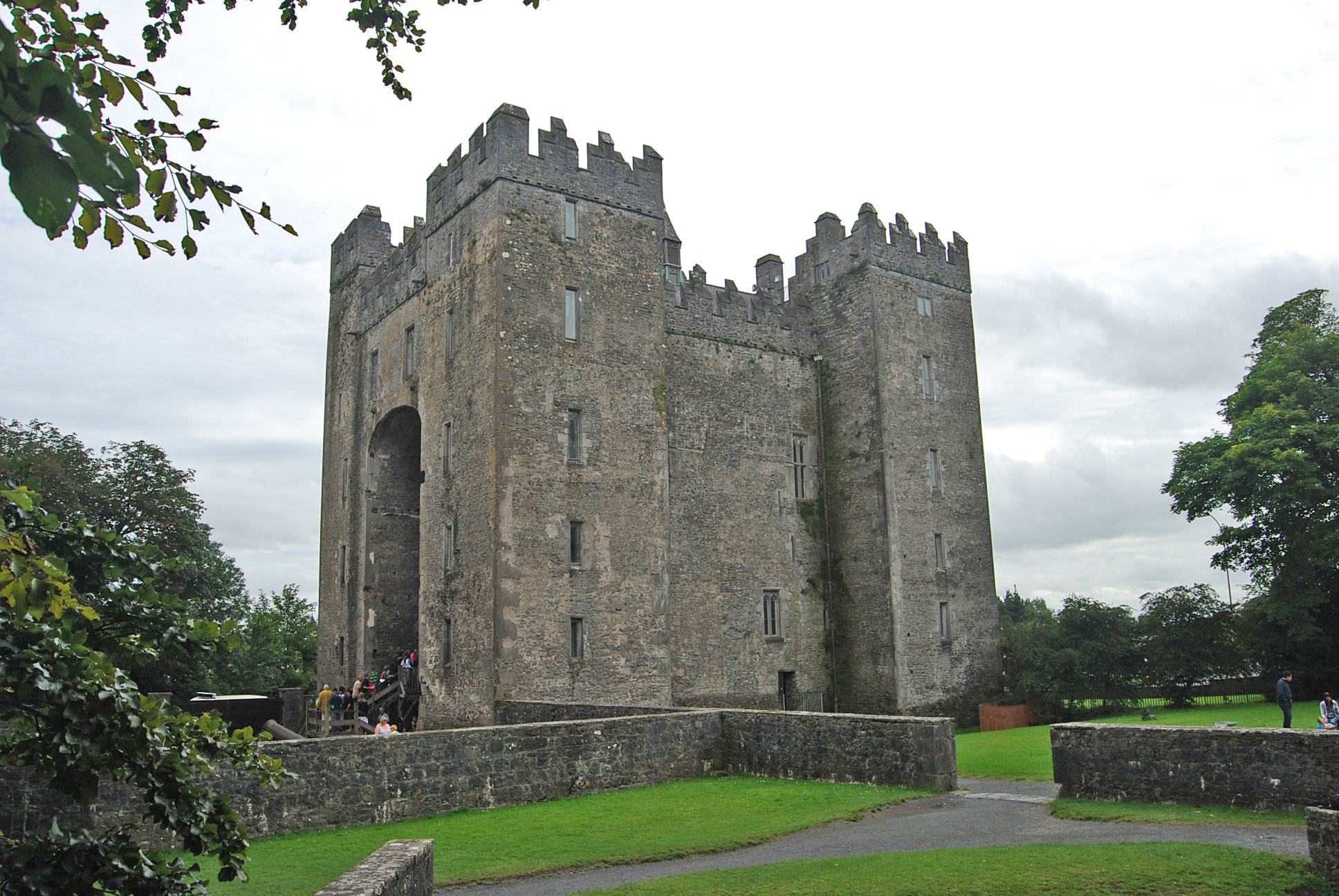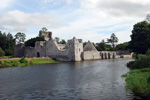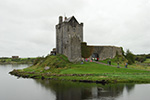History
Bunratty Castle resides along the confluence of the Shannon estuary and Owenogarney River, once known as the Raithe River. The castle eventually received its name from the Irish, Caisleán Bhun Raithe, which translates to "Castle at the Mouth of the Ratty."

The first castle was built in 1250 when King Henry III granted the lands to Robert De Muscegro, who made a traditional motte and bailey Norman-style structure consisting of a strong wooden tower atop an earthen motte.
Eventually, the lands were revoked by King Henry III and granted to Thomas De Clare, a descendant of Strongbow, who built the first stone castle on the site. In 1318, Thomas and his son, Richard De Clare, were killed by Irish forces at the Battle of Dysert O'Dea as part of the Irish Bruce Wars. After hearing the news, De Clare's wife set fire to the castle and town before setting sail for England. Upon the arrival of the Irish to Bunratty Castle after the battle, the devastation encountered may best be characterized by a chronicler at the time who described it as "deserted, empty, wrapped in fire, from which time to this, never one of the breed of De Clare has come back to claim it."
In 1322, the castle was restored for the King of England. However, the Irish Chieftains of Thomond destroyed it a decade later, in 1332, under the O'Briens and MacNamaras. The castle remained in ruins for 21 years before being rebuilt by Sir Thomas Rokeby. However, it was once again attacked and destroyed by the Irish.
The fourth and final castle at Bunratty was built by the MacNamaras around 1425. Architecturally, it was constructed in a rectangular tower house style. Approximately half a century later, ownership reverted to the O'Briens, who represented the most prominent clan in North Munster. The castle and surrounding area prospered under the O'Briens, who were granted the title 'Earls of Thomond' by King Henry VIII of England. However, Bunratty Castle was eventually surrendered when their reign ended upon the arrival of Cromwellian troops. Thereafter, the O'Briens relocated to Dromoland Castle.
In 1646, Lord Barnabas O'Brien allowed Lord Forbes, who was commanding the forces of the English, to occupy Bunratty Castle. When he left for England to join King Charles, the castle's defense was left to Rear-Admiral Penn, father of William Penn and Pennsylvania's founder. After a long siege, the castle was surrendered to the Confederates, and Penn was allowed to sail away to Kinsale.
Over time, various Irish families occupied the castle until the Studdert family took possession in 1720. They remained there for approximately a century before the castle fell into disrepair and ruin. In 1945, the ruins were purchased by Lord Gort, 7th Viscount Gort, who restored the castle to its current condition. Contents within the castle include 16th century style furnishings from Lord Gort and his wife. Today, Bunratty Castle represents one of the finest castles in Ireland.
Castle Highlights
Bunratty Castle was constructed as a traditional Irish rectangular tower house with three main floors and turrets at each corner. The turrets and outer wall areas surrounding the main central rooms contain smaller bedrooms, kitchens, a private chapel, and a dungeon. The most impressive room in the castle, the Great Hall, is located on the top floor. It was a banquet hall and audience chamber for the Earls of Thomond. Various decorative tapestries hang from the walls of the hall.
Moreover, large windows and high-plastered walls give the room a bright and airy ambiance. The floor below the Great Hall contains the Main Guard. This area served as the general living and dining area for soldiers and retainers. Even within this shared space, status and precedence were extremely important as a demarcation line on the floor divided the room between officers, general soldiers, and castle workers.
Bunratty Castle is conveniently located just a few miles from Shannon Airport. The castle grounds include a folk park where visitors can experience Irish life more than a century ago by visiting farmhouses, shops, pubs, and thatched-roofed houses. But the biggest tourist attraction is the castle itself. A visit to Bunratty Castle will only be complete if you partake in one of the medieval banquet dinners hosted after the castle closes for daytime visitors. For those with a reservation, guests gather in the Great Hall to listen to musicians playing a harp and violin while enjoying a beverage before enjoying a three-course meal within the Main Guard. During dinner, Irish singers entertain the crowd by singing traditional Irish songs. Upon exiting in the dark, you will notice the castle's majesty illuminated by flood lights.
Bunratty Castle is haunted by a Banshee.




